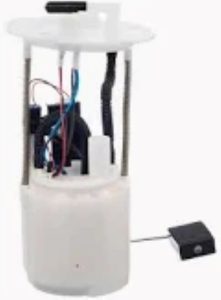Fuel pumps are imperfect units that have a lot of common breaking points, and in many cases these fuel pumps will lose the battle to other parts. Just like we wear out when it is too hot, the pump constantly moving in such high temperatures can degrade and fail at a faster rate — especially on vehicles that are driven in super hot climates. For example, a fuel pump rated for 100,000 miles over its life could let go at 60,000 if prolonged heat exposure is sending the gas inside it to boil. This is because the rotor and vanes have already worn down, which makes them run more inefficiently at higher temperatures and contributes to their failure.
Another thing that causes fuel pump failure is running on low fuel. Fuel is both the lubricating oil and coolant of the pump, when the fuel level is too low, it will expose the pump body and heat. AAA study shows driving on less than a quarter-tank of fuel increases risk of fuel pump failure by 20-30% Fuel pumps get replaced well before they should be because the vehicle runs out of gas too easily.
Plus, if your vehicle has picked up contaminated fuel at some point during its life – siphoning dirty gasoline out of one car to put in another sort of thing, or possibly filling up a tank from a barrel that has had sediment swirled into it by inept careless attendants who didn't keep the cover on this time – then debris and sediment can block an internal filter built into the pump, or damage its moving parts. For regions that have inconsistent fuel quality, which could be rural or under developed, fuel pumps could fail in half of their lifecycle. For instance, a 150,000-mile pump could be reduced to a 75,000-mile service life in those conditions by having dirt or rust particles from the fuel clog it up. Scheduled fuel-filter changes every 30,000 miles or so can help to trap dirt before it reaches the injectors.
Pump Failure Electrical problems are another frequent cause of pump failures. This can be due a shortcircuit, or faulty wiring which is why the pump may not be getting enough of voltage to operate properly. It is a real issue for performance fuel pumps as they need 12 V to provide the required pressure. Consider a 12-volt fuel pump that sees its voltage fall to 10 volts may deliver only 70% of its flow rate and if the vehicle is by then be running poorly, this may stress the engine, which could damage or destroy our electric pump.

There is also the possibility that the pump may have been long overdue. Even given the best conditions, some pumps will eventually fail due to general wear and tear on their internal components such as the impeller and motor brushes. According to some manufacturers, the chances of experiencing a failure after 10 years or 100,000 miles are up by half (notably in high mileage use and when towing), and you could enjoy 'serpentine peace-of-mind.
A high-profile example of the automotive industry is millions of car recalls due to faulty Denso fuel pumps. The pumps, which were installed on models such as the Toyota Camry, failed early due to a fault with the impeller, causing them to cease delivering fuel and bring about stalling and potential crashes. The recall only served to demonstrate just how a minor manufacturing fault could snowball into a monumental failure that costs the company millions in repairs and replacements as well.
High performance pumps from Walbro or AEM are one such upgrade for clear benefits especially with a modded/set-up car. Still, performance pumps do have problems if they are not installed correctly or the maintenance is neglected. While a pump capable of delivering 450 liters per hour (LPH) is highly efficient, if the fuel lines and/or injectors cannot support that flow you may experience pressure inconsistencies leading to accelerated wear.
Visit www.fuelpumpoland.com to know more about maintaining and selecting the right Fuel Pump available in the market today.
